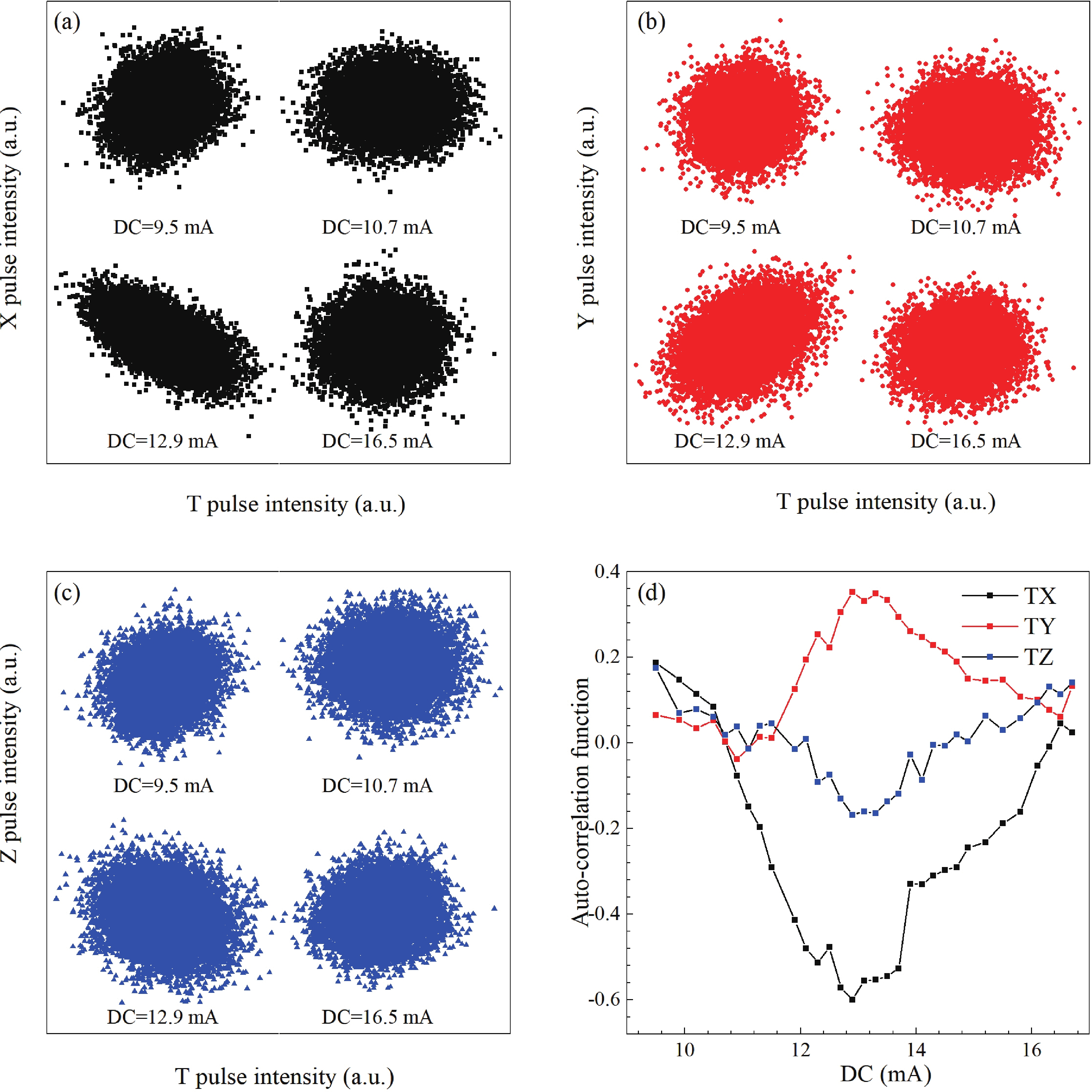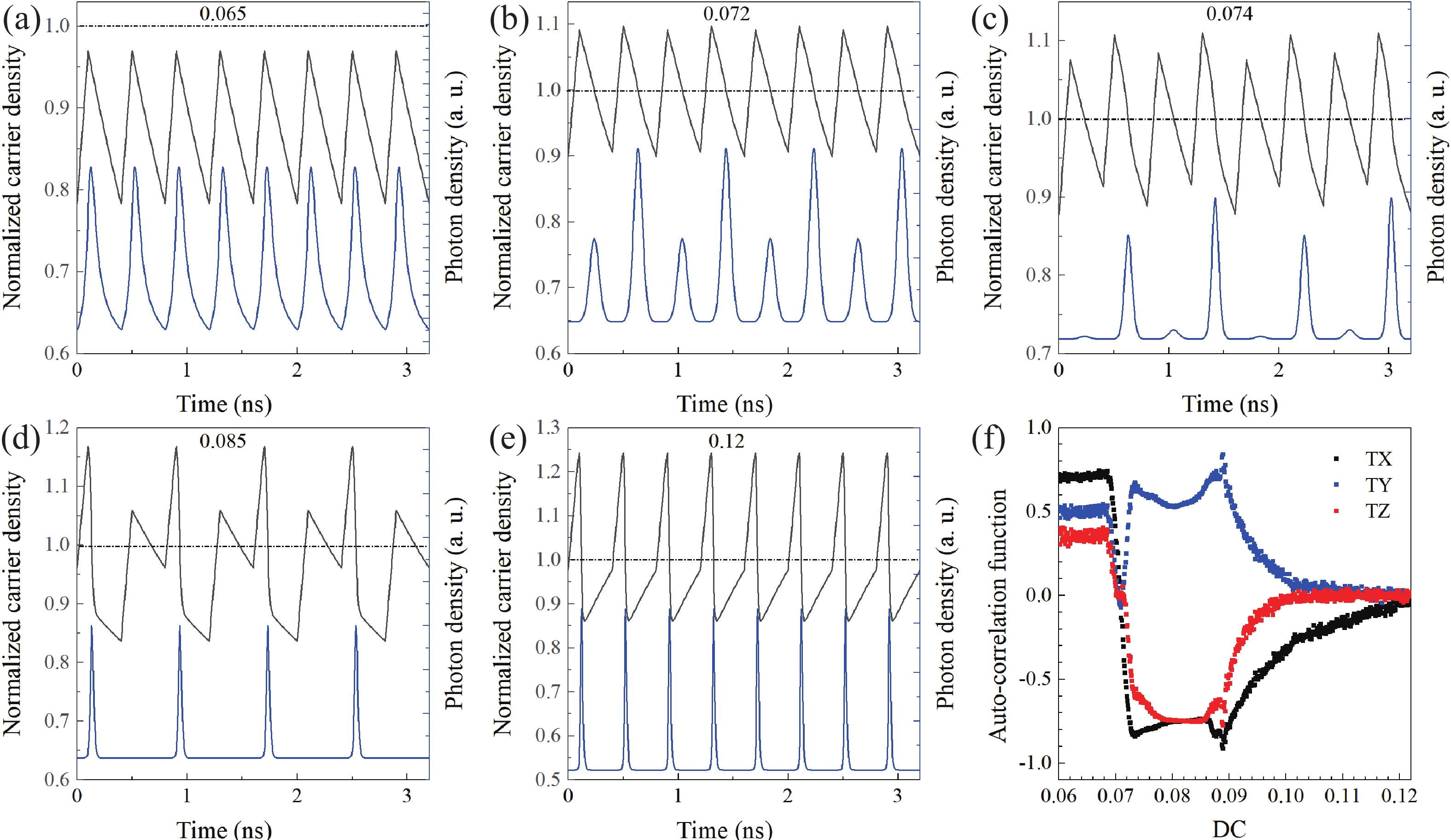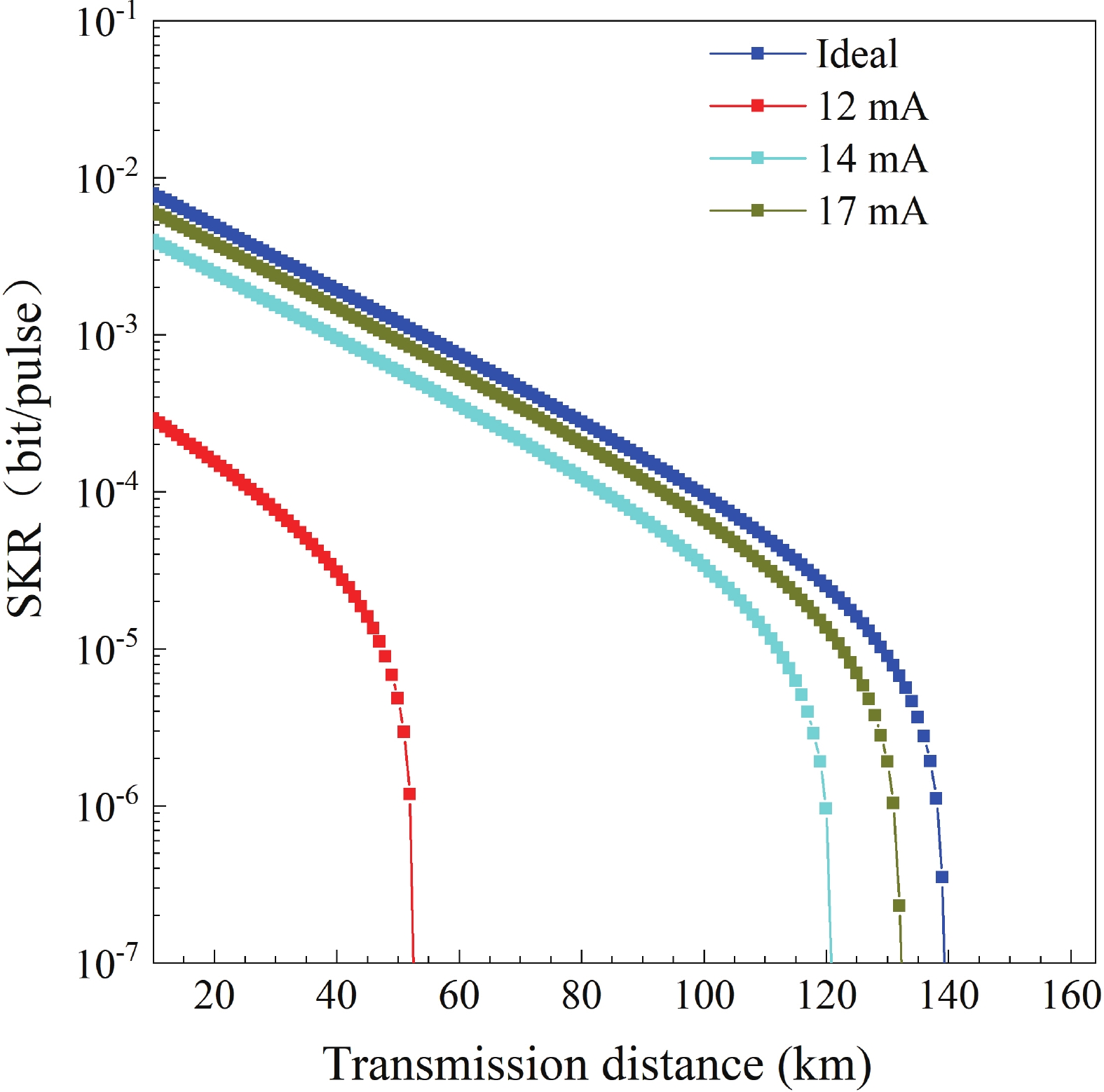| Citation: |
Yuanfei Gao, Tao Wang, Yixin Wang, Zhiliang Yuan. Intensity correlation distribution in gain-switched semiconductor laser for quantum key distribution[J]. Journal of Semiconductors, 2025, 46(6): 062101. doi: 10.1088/1674-4926/24090052
****
Y F Gao, T Wang, Y X Wang, and Z L Yuan, Intensity correlation distribution in gain-switched semiconductor laser for quantum key distribution[J]. J. Semicond., 2025, 46(6), 062101 doi: 10.1088/1674-4926/24090052
|
Intensity correlation distribution in gain-switched semiconductor laser for quantum key distribution
DOI: 10.1088/1674-4926/24090052
CSTR: 32376.14.1674-4926.24090052
More Information-
Abstract
In the implementation of quantum key distribution, Security certification is a prerequisite for social deployment. Transmitters in decoy-BB84 systems typically employ gain-switched semiconductor lasers (GSSLs) to generate optical pulses for encoding quantum information. However, the working state of the laser may violate the assumption of pulse independence. Here, we explored the dependence of intensity fluctuation and high-order correlation distribution of optical pulses on driving currents at 2.5 GHz. We found the intensity correlation distribution had a significant dependence on the driving currents, which would affect the final key rate. By utilizing rate equations in our simulation, we confirmed the fluctuation and correlation originated from the instability of gain-switched laser driven at a GHz-repetitive frequency. Finally, we evaluated the impact of intensity fluctuation on the secure key rate. This work will provide valuable insights for assessing whether the transmitter is operating at optimal state in practice. -
References
[1] Gisin N, Ribordy G, Tittel W, et al. Quantum cryptography. Rev Mod Phys, 2002, 74, 145 doi: 10.1103/RevModPhys.74.145[2] Fröhlich B, Dynes J F, Lucamarini M, et al. A quantum access network. Nature, 2013, 501, 69 doi: 10.1038/nature12493[3] Chapuran T E, Toliver P, Peters N A, et al. Optical networking for quantum key distribution and quantum communications. New J Phys, 2009, 11, 105001 doi: 10.1088/1367-2630/11/10/105001[4] Sasaki M, Fujiwara M, Ishizuka H, et al. Field test of quantum key distribution in the Tokyo QKD Network. Opt Express, 2011, 19, 10387 doi: 10.1364/OE.19.010387[5] Chen T Y, Wang J, Liang H, et al. Metropolitan all-pass and inter-city quantum communication network. Opt Express, 2010, 18, 27217 doi: 10.1364/OE.18.027217[6] Wang X B. Beating the photon-number-splitting attack in practical quantum cryptography. Phys Rev Lett, 2005, 94, 230503 doi: 10.1103/PhysRevLett.94.230503[7] Lo H K, Ma X F, Chen K. Decoy state quantum key distribution. Phys Rev Lett, 2005, 94, 230504 doi: 10.1103/PhysRevLett.94.230504[8] Wang X B, Yang L, Peng C Z, et al. Decoy-state quantum key distribution with both source errors and statistical fluctuations. New J Phys, 2009, 11, 075006 doi: 10.1088/1367-2630/11/7/075006[9] Wang X B, Peng C Z, Zhang J, et al. General theory of decoy-state quantum cryptography with source errors. Phys Rev A, 2008, 77, 042311 doi: 10.1103/PhysRevA.77.042311[10] Lütkenhaus N, Jahma M. Quantum key distribution with realistic states: Photon-number statistics in the photon-number splitting attack. New J Phys, 2002, 4, 44 doi: 10.1088/1367-2630/4/1/344[11] Scarani V, Bechmann-Pasquinucci H, Cerf N J, et al. The security of practical quantum key distribution. Rev Mod Phys, 2009, 81, 1301 doi: 10.1103/RevModPhys.81.1301[12] Grünenfelder F, Boaron A, Rusca D, et al. Performance and security of 5 GHz repetition rate polarization-based quantum key distribution. Appl Phys Lett, 2020, 117, 144003 doi: 10.1063/5.0021468[13] Nakata K, Tomita A, Fujiwara M, et al. Intensity fluctuation of a gain-switched semiconductor laser for quantum key distribution systems. Opt Express, 2017, 25, 622 doi: 10.1364/OE.25.000622[14] Gao Y F, Yuan Z L. Suppression of patterning effect using IQ modulator for high-speed quantum key distribution systems. Opt Lett, 2023, 48, 1068 doi: 10.1364/OL.481374[15] Kobayashi T, Tomita A, Okamoto A. Evaluation of the phase randomness of a light source in quantum-key-distribution systems with an attenuated laser. Phys Rev A, 2014, 90, 032320 doi: 10.1103/PhysRevA.90.032320[16] Lo H K, Preskill J. Security of quantum key distribution using weak coherent states with nonrandom phases. Quantum Inf Comput, 2007, 7, 431 doi: 10.26421/QIC7.5-6-2[17] Yuan Z L, Lucamarini M, Dynes J F, et al. Robust random number generation using steady-state emission of gain-switched laser diodes. Appl Phys Lett, 2014, 104, 261112 doi: 10.1063/1.4886761[18] Shakhovoy R, Puplauskis M, Sharoglazova V, et al. Phase randomness in a semiconductor laser: Issue of quantum random-number generation. Phys Rev A, 2023, 107, 012616 doi: 10.1103/PhysRevA.107.012616[19] Dynes J F, Yuan Z L, Sharpe A W, et al. Probing higher order correlations of the photon field with photon number resolving avalanche photodiodes. Opt Express, 2011, 19, 13268 doi: 10.1364/OE.19.013268 -
Proportional views





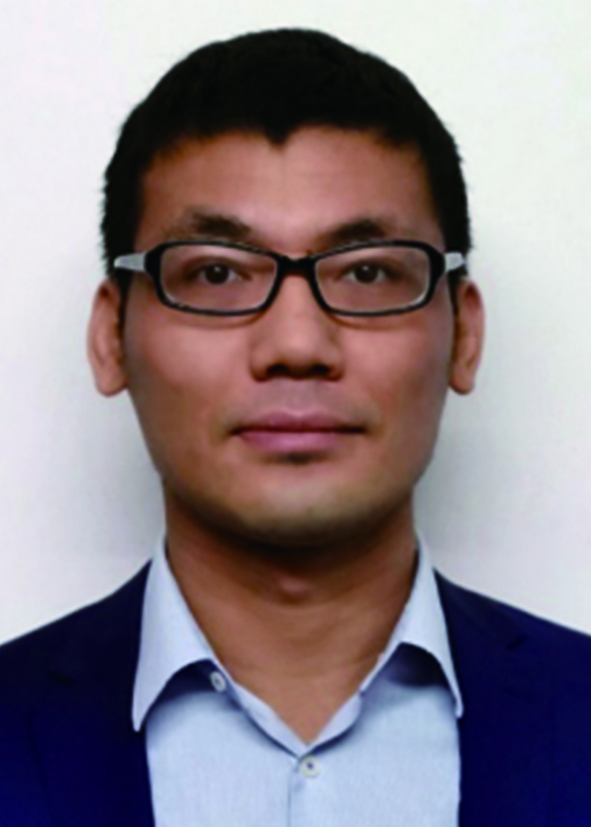 Yuanfei Gao received a bachelor's degree and a Ph.D. in optics from Zhengzhou University in China in 2013 and 2019. Then he works as an assistant research fellow at the Beijing Academy of Quantum Information Sciences in China. His research interest is on light−matter interactions and quantum optics.
Yuanfei Gao received a bachelor's degree and a Ph.D. in optics from Zhengzhou University in China in 2013 and 2019. Then he works as an assistant research fellow at the Beijing Academy of Quantum Information Sciences in China. His research interest is on light−matter interactions and quantum optics.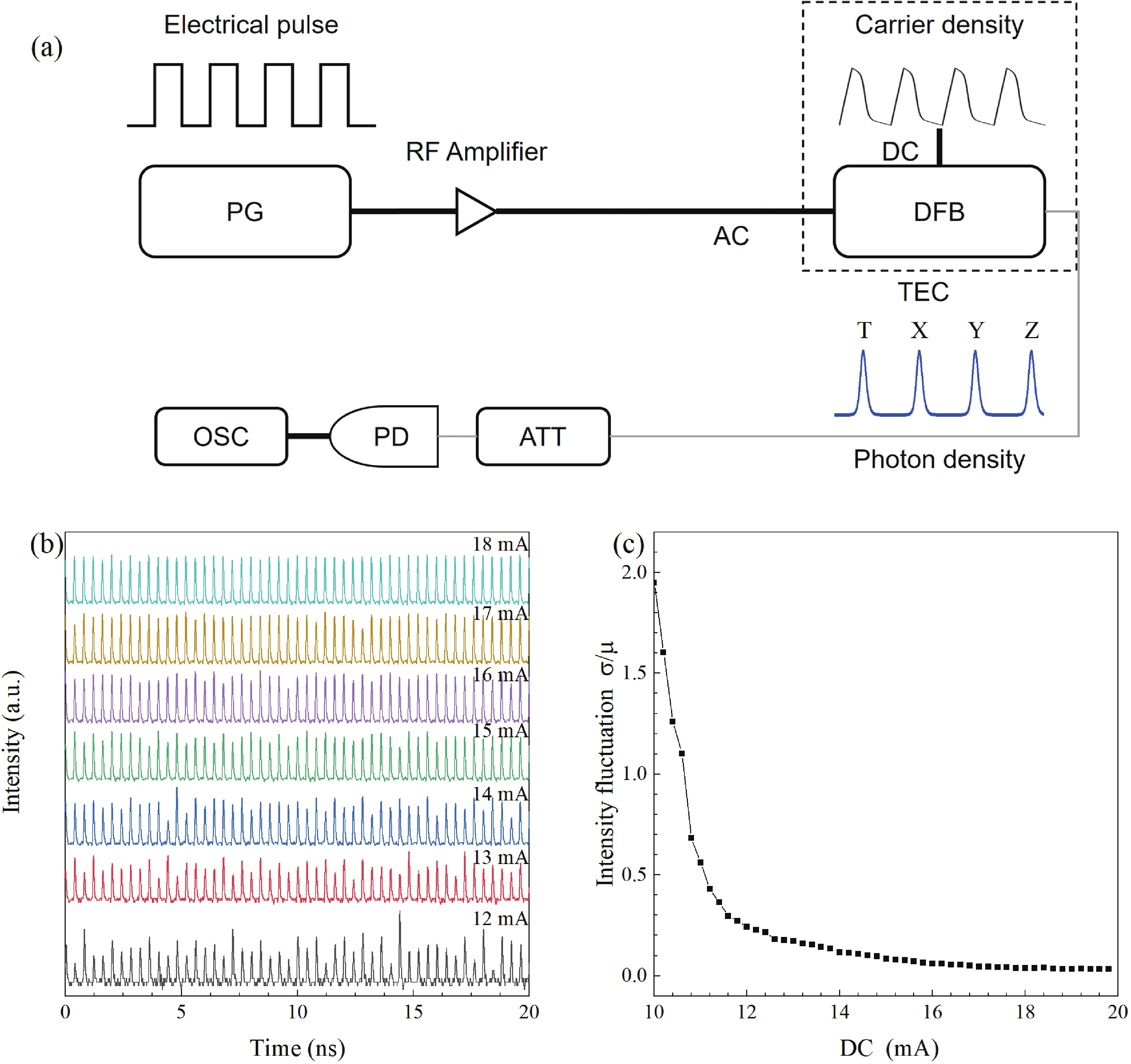
 DownLoad:
DownLoad:
